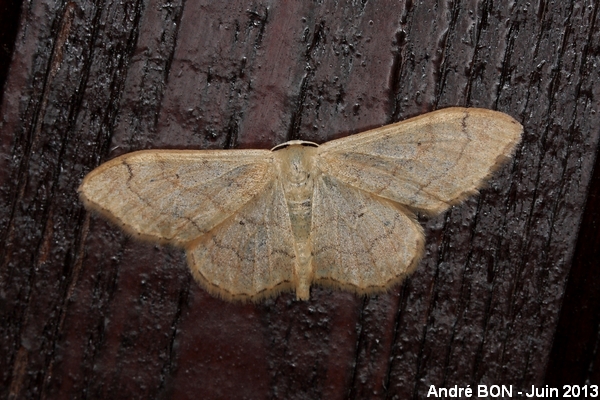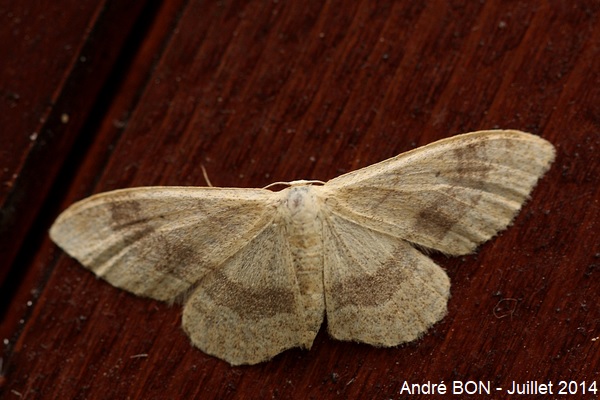

| Riband Wave (Idaea aversata (Linnaeus, 1758)) |


|
|
Scientific name: Idaea aversata (Linnaeus, 1758) Common name: Riband Wave French name: Impolie, Ruban ondulé, Acidalie détournée. Order: Lepidoptera Suborder: Heterocera Family: Geometridae Subfamily: Sterrhinae Wingspan: 23-30 mm. Biotope: Various habitats with low growing plants, woodland edges, fallow lands, gardens. Geographic area: Europe, Asia east to Japan, North Africa. Flight time: April to October. Number of generations : 1 and sometimes 2. Caterpillar: Brown, extremely wrinkled and tapering at the front. The upper side bears dark brown to black V-shaped markings. Host plant: Low growing plants including Dandelions (Taraxacum sp), Docks (Rumex sp), Bedstraws (Galium sp), Knotweeds (Polygonum sp), etc. |
The Riband Wave is a whitish grey to pale brown colour and is found in two different forms. The remutata form shows three brown lines crossing the fore wings and the hind wings. The antemedian line is often very weekly marked. The submarginal line is clearly angled close to the costal edge. The other form, called normal form, shows, on the fore wings and on the hind wings, a broad grey band delimitated by the median and submarginal lines. The black discal spots are clearly visible on the four wings and are very close to (or even touch) the median line. The wing margin is marked with a black line with black dots on the fringe in the alignment of the veins. The Riband Wave over winters as a young caterpillar. There is a possible confusion of the remutata form with the Plain Wave (Idaea straminata) and with the Ashen Wave (Idaea deversaria). The submarginal line on Idaea straminata does not show a well marked angle close to the costal edge. Idaea deversaria shows a broader median line. The discal spot is more distant from the median line on the hind wings. There is often a diffuse dark stripe between the submarginal line and the wing margins. |
| [To know more about the Riband Wave] [Next picture] [Top] |

|
The lack of a broad grey band, the submarginal line clearly angled close to the costal edge and the thin median line indicate Idaea aversata in the remutata form. |
| [To know more about the Riband Wave] [Previous picture] [Top] |

|
Here is the normal form with a broad grey median band. |